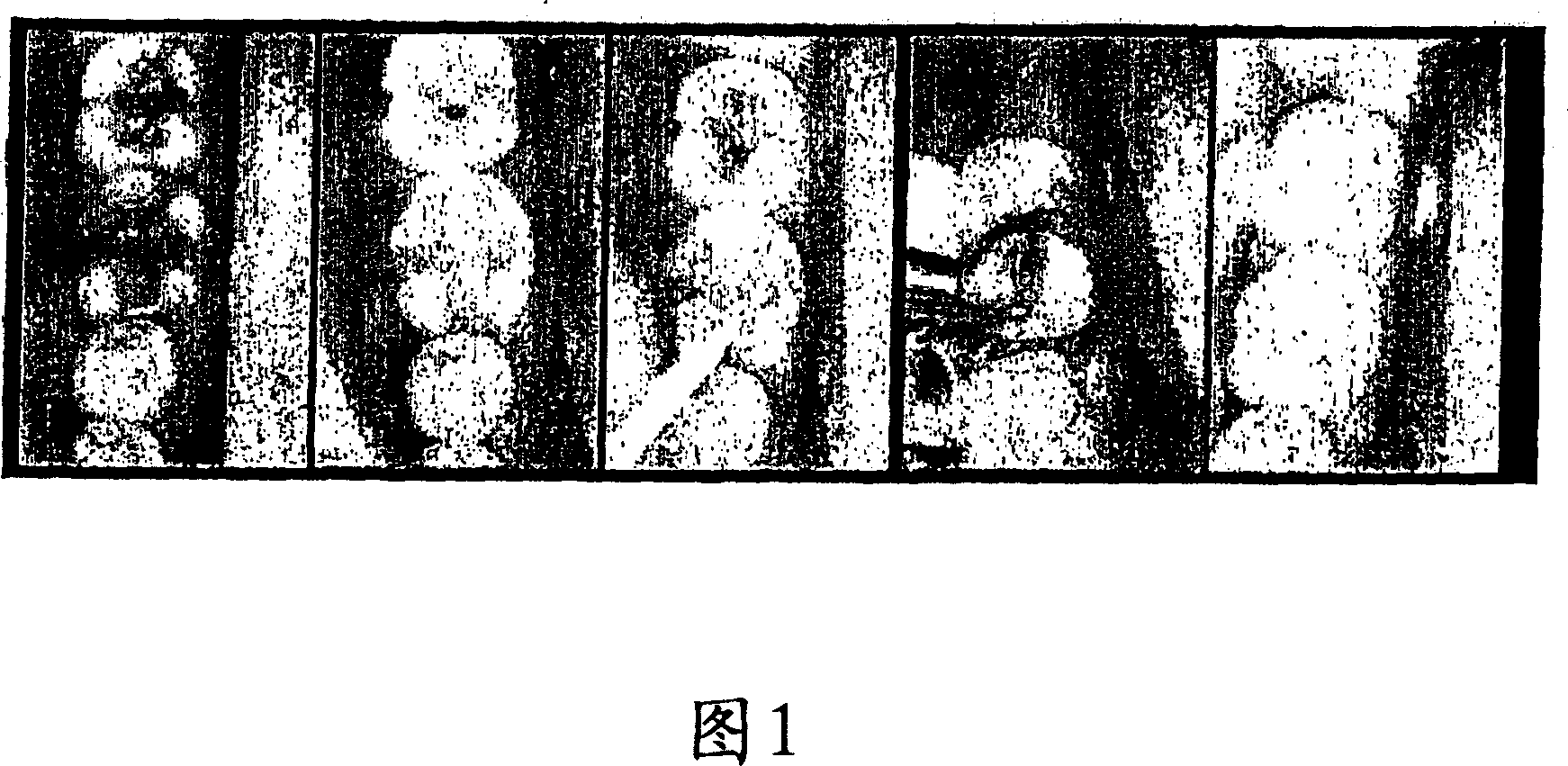Ultrasonic curing of dental filling materials
A filling material, a technology for teeth, applied in the field of zirconia particle group and preparation of such zirconia particles, controlling the volume shrinkage rate of composite materials during curing, composite materials in the form of dental filling materials, repairing teeth, ultrasonic curing of dental filling materials , which can solve the problems of implant failure, mechanical performance degradation, unsuitable size, etc.
- Summary
- Abstract
- Description
- Claims
- Application Information
AI Technical Summary
Problems solved by technology
Method used
Image
Examples
example
[0093] Example: Treatment of tetragonal zirconia crystals with ethanol in an ultrasonic bath (400 kHz) produces a phase transition. The dispersion of zirconia particles in the resin base can be phase inverted by ultrasound using a scale remover, a device used by dentists to remove tartar.
[0094] In another embodiment, the Martin transition of the filler component is induced by exposing the surface of the filler component to a chemical initiator.
[0095] For phase transitions of systems where the first phase is metastable, but where the activation energy barrier is high (because the surface energy of the first phase is low), the activation energy barrier can be lowered by surface modification. Activation of the phase transition can be induced by surface modification. The activation energy barrier may be the energy barrier required to perform a surface modification that makes the surface energy of the phase higher (or makes it more similar to the surface of the second phase)...
Embodiment approach
[0157] In order to obtain zirconia particles that can undergo rapid phase transformation, a large surface area, such as 10-250m 2 / g, or even better 50-200m 2 / g, are preferred and can also be obtained in the manner described here.
[0158] Accordingly, a further aspect of the invention relates to an average particle size of 50-2000 nm and a BET surface area of 10-250 m 2 / g of zirconia particles that exist as a metastable first phase and are capable of undergoing a Martin transition to a stable second phase.
[0159] Preferably, the population of zirconia particles undergoes Martin transformation to an extent of at least 80% within 300 seconds when tested according to the "Zirconia Particle Transformation Test" defined herein.
[0160] As mentioned above, the average particle size is typically 50-2000 nm, for example 50-1000 nm, especially 100-600 nm.
[0161] Although the particle size of zirconia particles is typically 50-2000 nm, it is believed that the particles comp...
Embodiment 1- 4
[0225] Example 1 - Tetragonal nano-sized zirconia
[0226] The preparation of tetragonal nanosized zirconia (ZrO 2 )Methods. by ZrOCl 2 ·8H 2 O and pure water to prepare 0.5M ZrOCl 2 solution. At a constant pH of 10, with 1.5M NH 3 Precipitated amorphous zirconia ZrO x (OH) 4-2x . The mixture was kept under magnetic stirring for 10 days. The precipitate was then washed with pure water, and the filter cake was heated to 120°C overnight. The filter cake was then crushed into a fine white powder and placed in an oven at 450°C with a dry atmosphere.
PUM
| Property | Measurement | Unit |
|---|---|---|
| particle size | aaaaa | aaaaa |
| specific surface area | aaaaa | aaaaa |
| particle size | aaaaa | aaaaa |
Abstract
Description
Claims
Application Information
 Login to View More
Login to View More - R&D
- Intellectual Property
- Life Sciences
- Materials
- Tech Scout
- Unparalleled Data Quality
- Higher Quality Content
- 60% Fewer Hallucinations
Browse by: Latest US Patents, China's latest patents, Technical Efficacy Thesaurus, Application Domain, Technology Topic, Popular Technical Reports.
© 2025 PatSnap. All rights reserved.Legal|Privacy policy|Modern Slavery Act Transparency Statement|Sitemap|About US| Contact US: help@patsnap.com

